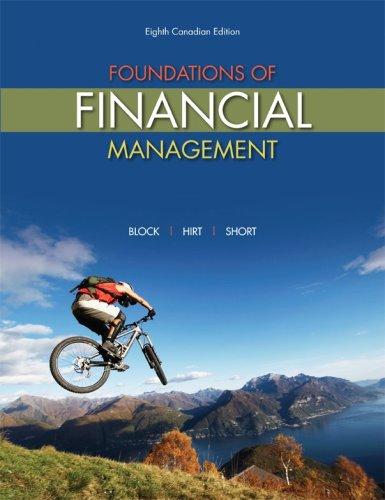Question
Suppose that the standard deviation of returns from a typical share is about .45 (or 45%) a year. The correlation between the returns of each
Suppose that the standard deviation of returns from a typical share is about .45 (or 45%) a year. The correlation between the returns of each pair of shares is about .2.
a. Calculate the variance and standard deviation of the returns on a portfolio that has equal investments in 2 shares, 3 shares, and so on, up to 10 shares. (Use decimal values, not percents, in your calculations. Do not round intermediate calculations. Round the "Variance" answers to 6 decimal places. Round the "Standard Deviation" to 3 decimal places.)
| No. of | Standard | |
| Shares | Variance | Deviation |
| 1 | ||
| 2 | ||
| 3 | ||
| 4 | ||
| 5 | ||
| 6 | ||
| 7 | ||
| 8 | ||
| 9 | ||
| 10 | ||
b. How large is the underlying market variance that cannot be diversified away? (Do not round intermediate calculations. Round your answer to 3 decimal places.)
Market risk
c. Now assume that the correlation between each pair of stocks is zero. Calculate the variance and standard deviation of the returns on a portfolio that has equal investments in 2 shares, 3 shares, and so on, up to 10 shares. (Use decimal values, not percents, in your calculations. Do not round intermediate calculations. Round the "Variance" answers to 6 decimal places. Round the "Standard Deviation" to 3 decimal places.)
| No. of | Standard | |
| Shares | Variance | Deviation |
| 1 | ||
| 2 | ||
| 3 | ||
| 4 | ||
| 5 | ||
| 6 | ||
| 7 | ||
| 8 | ||
| 9 | ||
| 10 | ||
Step by Step Solution
There are 3 Steps involved in it
Step: 1

Get Instant Access to Expert-Tailored Solutions
See step-by-step solutions with expert insights and AI powered tools for academic success
Step: 2

Step: 3

Ace Your Homework with AI
Get the answers you need in no time with our AI-driven, step-by-step assistance
Get Started


